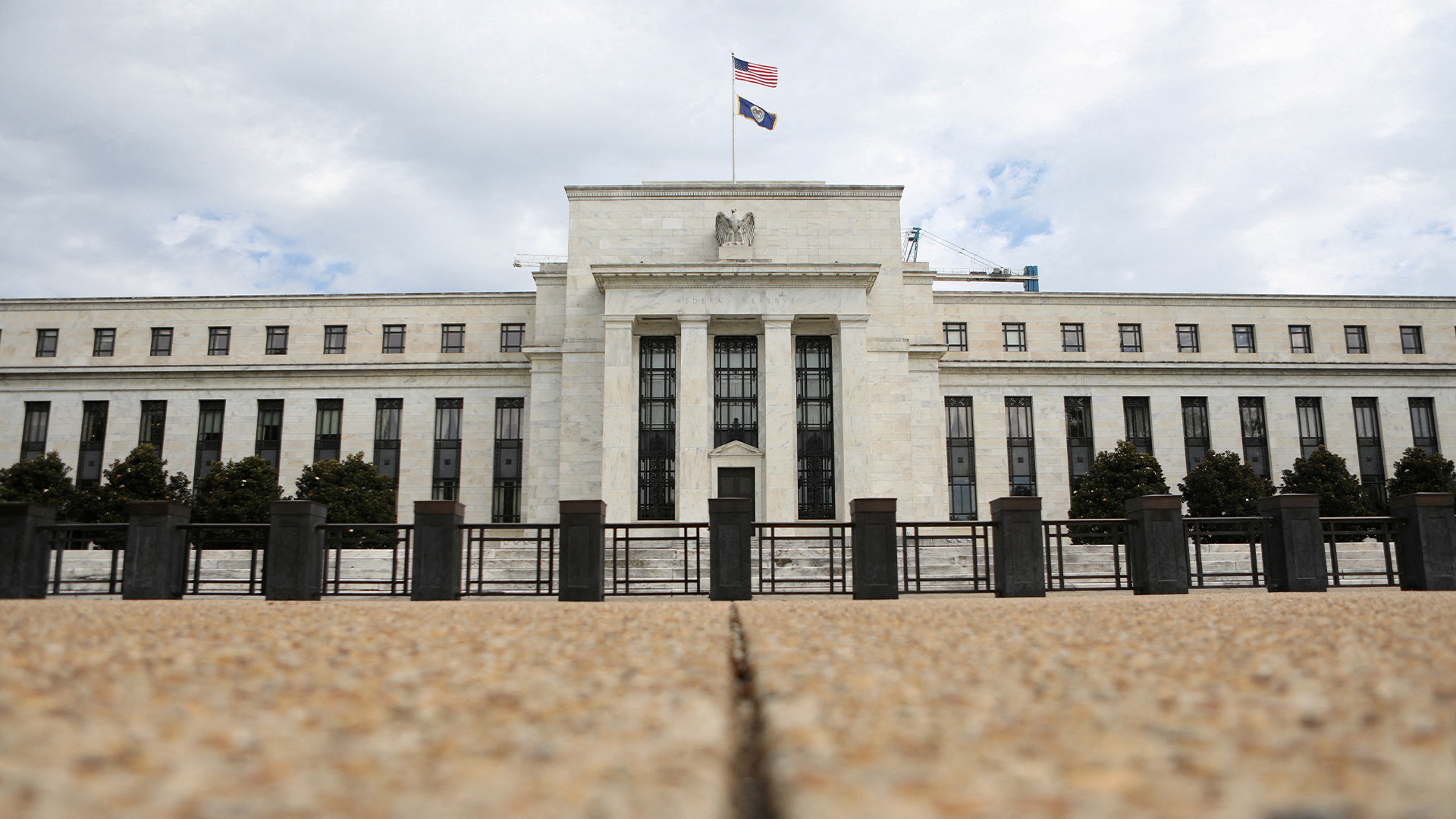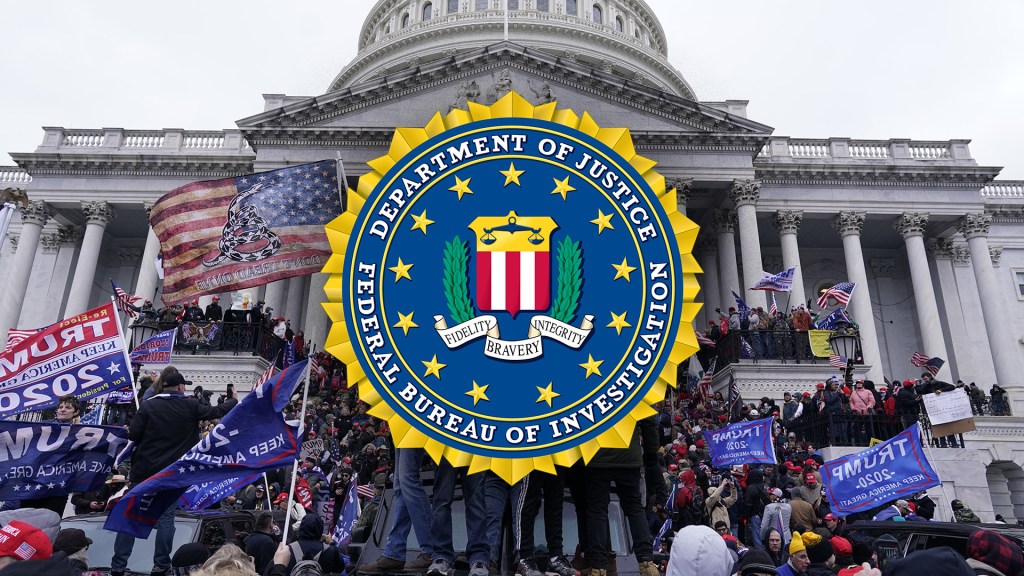
[Simone Del Rosario]
We’ve been in a will they-won’t they cycle with the Federal Reserve all year. Of course, I’m talking about cutting interest rates. At the start of 2024, markets expected six cuts this year. But inflation’s not budging and now any cuts at all are in question. I want to bring in former Kansas City Fed President Thomas Hoenig. Tom, Minneapolis Fed President Neel Kashkari just said that the Fed may need to hold rates where they are all year. For you, what data would you need to see to justify cutting rates?
Thomas Hoenig:
I don’t think that they will be, or should be easing rates this year. If you think about it for a moment, the consensus is building among economists, it’s not universal yet, that the real rate of equilibrium, rate of interest for policy, the real rate without inflation, is around 2% it’s risen from what they used to think was less than 1% to closer to 2% and that’s because fiscal policy has been very strong. The economy has been very strong. The Labor market’s been very strong. So 2% is the new, what I’ll call equilibrium rate. And if that’s the case, if you were wanting to have 2% inflation, your rate over the long term would be different. But right now, the nominal policy rate, I’m making sense. The nominal policy rate is 5% and inflation is 3% so the real rate is 2% so in a sense, we’re in a what I’ll refer to as an unstable equilibrium, because at this level, at the current level of 5% 5.3% Fed funds rate, nominal policy rate. We’re in a situation where inflation state should stay around 3% so if the if the Fed really wants to bring their inflation numbers down to 2% they’ve got to raise rates. And they certainly can’t ease or cut rates at this point. So that’s a fairly long answer to a straightforward question, but it is. It is a complicated time, and the Fed is really going to have difficult time cutting rates.
[Simone Del Rosario]
But what I’m hearing from you is that you don’t think that the current rate is restrictive enough.
Thomas Hoenig:
It’s it’s not if you want inflation down to 2% however you I recognize that you have to be careful, because at the moment, the banking industry is very vulnerable, and if it starts to tumble, then you’ll have a recession, a major recession, and they won’t avoid that. So they’re not they’re in a tight spot. That’s all there is to it.
[Simone Del Rosario]
Do you think that a soft landing is still possible?
Thomas Hoenig:
I think anything is possible, but I think it will be very difficult for them to do that, because we think about it, we have, we have inflation running 3% steadily for the last six months, despite different people saying taking different time periods to get a different answer, but it’s been running around 3% and the economy has done well under those under that conditions, and therefore, I think it is this, what I call this unstable equilibrium. So either you’re going to have to raise rates to bring it down and risk a greater financial problem and recession, or you’re going to have to let inflation run higher than your so called target, which you’re committed to 2% so it’s very hard to imagine a soft landing under these conditions. Maybe, if enough time runs at the current level, things will align to a soft landing. But it is unlikely, and
[Simone Del Rosario]
it seems like that last point is the direction that the Fed is going. You know, they’ve obviously been holding rates for some time now, and now hearing that maybe they want to hold rates for the rest of the year, just hoping that it’ll trickle down. Not a not a ton of fast action here, I wanted to ask you something, though there are certainly accusations out there that the Fed is too data dependent. Mohamed El Erian said that the Fed has become a play by play commentator. Do you think that the Fed is in that cycle right now where they are too dependent on the data that’s coming out every month to make their decision?
Thomas Hoenig:
Well, they certainly appear to be, don’t they? Because last, late last fall and into December, there was they were talking about rate cuts. The data changes suddenly, and the inflation numbers aren’t as hopeful as they thought. And they they start talking about higher for longer, then they say, but maybe, maybe a cut. And I would remind you of one other thing, yes, they’re data dependent, but also they very much want to cut rates. So that’s in the play. But so it’s this constant, inflation number of 3% or better. That’s holding them back. And even saying that, I would remind you that at the last meeting, they actually eased policy. They reduced their quantitative tightening substantially, so they’re now not allowing their balance sheet to run Office quickly. That makes financing for the government’s debt a little less stressful
[Simone Del Rosario]
if you were still making these decisions and having a vote on this. What data would be most important for you to look at?
Thomas Hoenig:
Well, I would look at a host of data. Certainly, I would look at the inflation numbers, since that’s your target, and I would follow that carefully. They are looking at the labor market. That’s That’s correct to look at it, see how strong it is and and I would, I would, I would look at the banking industry, just as they apparently are. So I don’t know that they’re they’re looking at their own data. It’s just that they, they keep changing how they’re looking at the data. For example, if they have been looking at the data year on year, and they’re looking at the CPI, the Consumer Price Index, as well as the personal consumption expenditures Price Index, they would have known inflation was still running too high at 3% and they would have never started talking about cutting rates last January and December. And had they done that, the market would have not, not have got quite so ambitious, if you will, in terms of their of almost turning to a boom like environment, and we might have been able to think about a soft landing now, but they got ahead of themselves. They looked at their most recent data, it looked like inflation was coming down. By gosh, we’re going to cut rates. They said it too soon, and that caused them, I think, now, greater problems and a more difficult time achieving their soft landing.
Simone Del Rosario:
So what is your best guess for what their plan is moving forward? Do you You already said that you don’t think they should cut rates this year and but you also said that they really want to. So is it hold steady? And do you see action in 2025 is that what we’re looking at right now?
Thomas Hoenig:
Well, I think, number one, they’re going to hold the rate steady. They should. Number two, they are going to, I think, continue to ease quantitative tightening, since that’s a big factor in the long term, in longer term interest rates. So in that sense, they are easing rates indirectly. So they’ll, I think they’ll continue along that plan. I think possibly, if inflation doesn’t come down, and I’m don’t see why would next year, then they may have to actually raise rates next year, which would be a slowing of the economy into 2025, and perhaps beyond. So the long term outlook isn’t necessarily for lower inflation. Long term outlook is really quite uncertain, and that’s why they should stop talking about data month to month, and look at the longer run and say, when we’re confident that inflation is at 2% then we will begin to talk about lowering rates. And I don’t mean it has to be exactly at 2% but a lot closer to 2% than 3% before they start actually moving down.
Simone Del Rosario:
Thomas Hoenig, former Kansas City Fed President. Thank you so much for your insight.
Thomas Hoenig:
Glad to be with you. Thank you.











